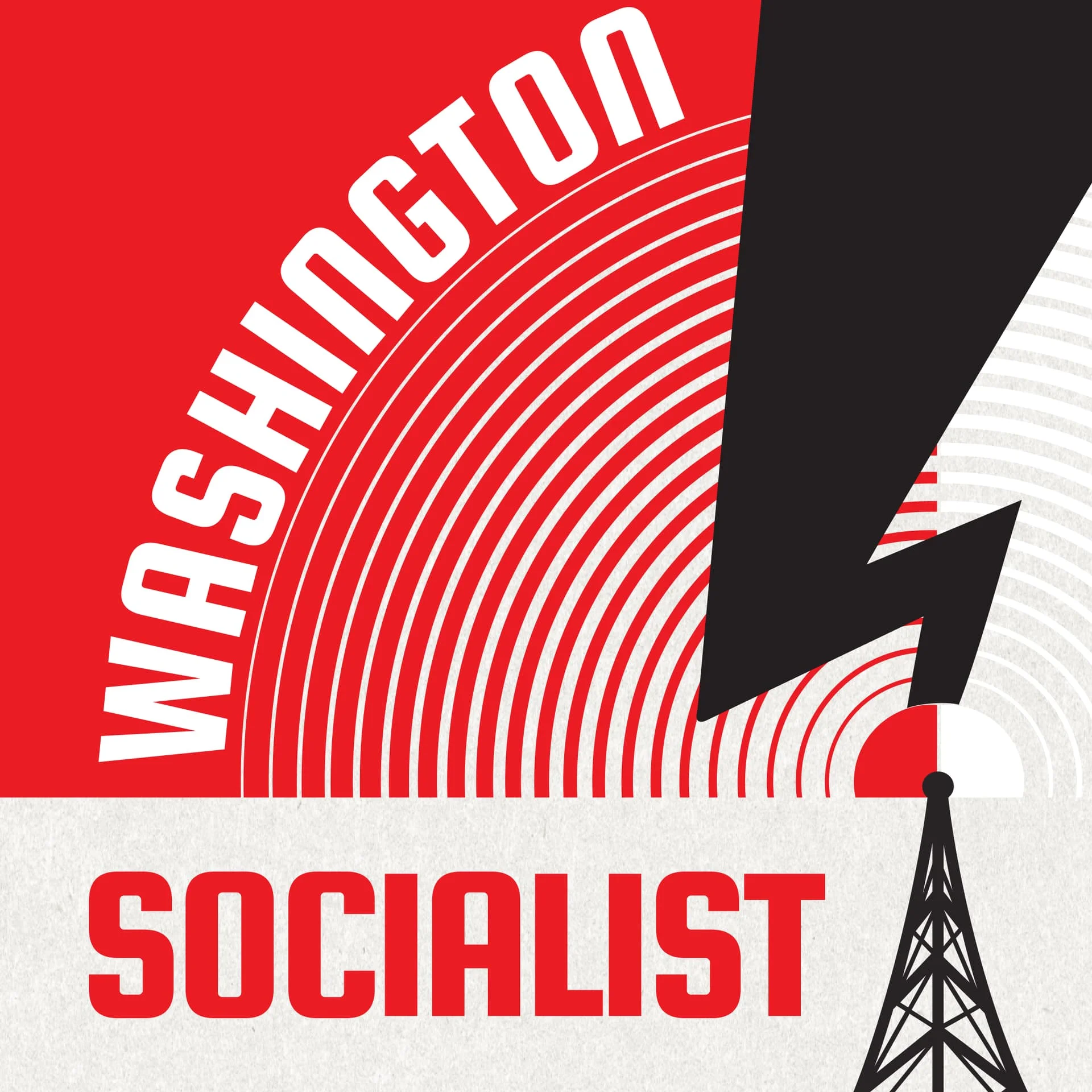

Liberals respond to Israeli war crimes with linguistic slaughter
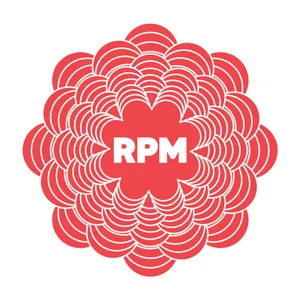

Border country: migrant solidarity in New York City
Revolutions Per Minute explores migrant solidarity efforts in Brooklyn, exploring the broader context of the global migration crisis as Israel continues its military offensive against Gaza. RPM interviews people who have recently arrived in New York from Mauritania, and we meet Jaz Walker from Assemblymember Emily Gallagher's office.


A Successful Step on the Path to the Bolin Creek Greenway!

On Tuesday, October 17th, 2023, the Carrboro Town Council voted to move forward with the Bolin Creek Greenway selecting the path along the Creekside sewer easement as the preferred alignment. After over a decade of unnecessary delay, Carrboro will make progress toward a green infrastructure project that will play a crucial role in fighting the climate crisis on a local scale. The expanded greenway will create shared natural spaces that everyone can safely use to get around town and help cut off our car and fossil fuel dependency.
Our engagement with town showed that those who opposed this measure were, as expected, a small but vocal minority. Our petition for building the greenway eclipsed all others and the survey put out by the town showed overwhelming support for the creekside easement. Support for creekside by leading environmental groups like the Sierra Club show that the faux-environmentalist concerns are not substantiated. The direction of municipal governments are often swayed by the small but vocal but today, democracy won.
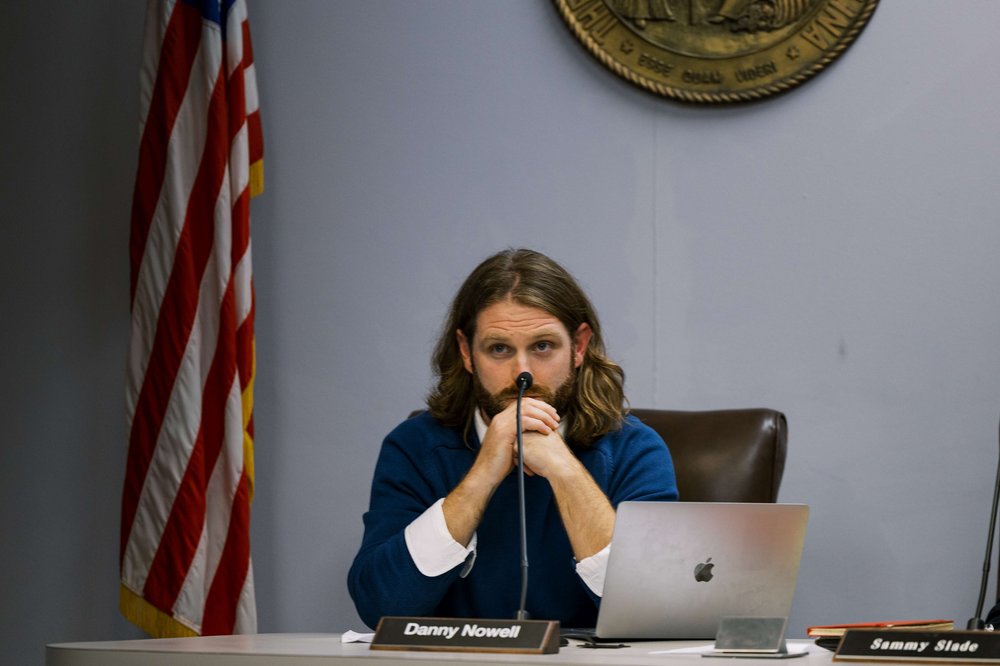
We are thankful for our partners in this fight including NEXT and Triangle Blog Blog as well as efforts made by our UNC chapter of the YDSA. They showed us that when progressive groups work together we can get amazing things done. We are proud of all our chapter members whose work in postering, writing, canvassing, and engaging community members delivered a crucial win for Carrboronians. We are thankful to the town council and staff for their efforts in ensuring that the many, and not the few, guided this public policy decision. And most of all, we are beyond excited to see y’all on the finished Bolin Creek Greenway.
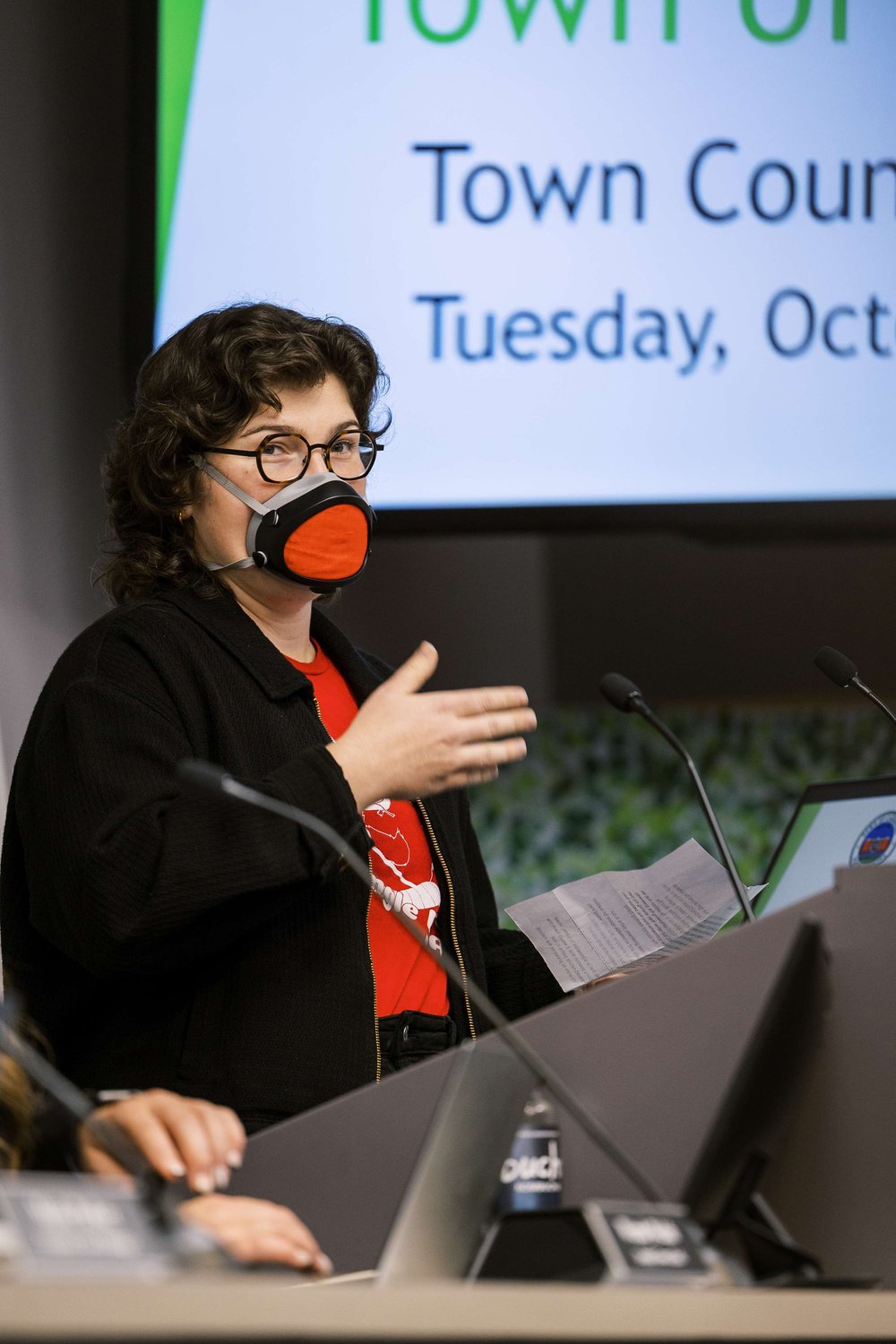
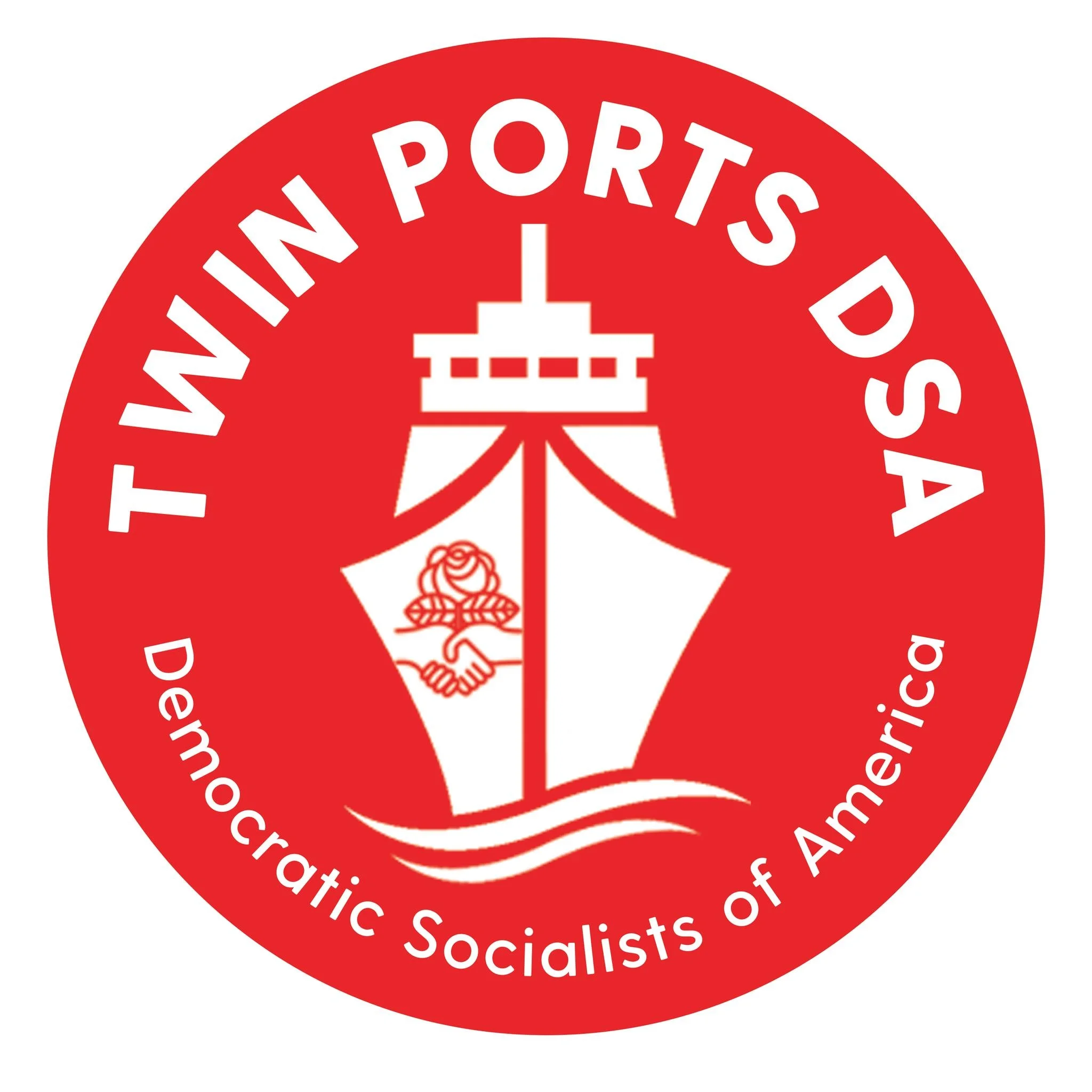

Act Now To Save Stop Ethnic Cleansing and Possible Genocide
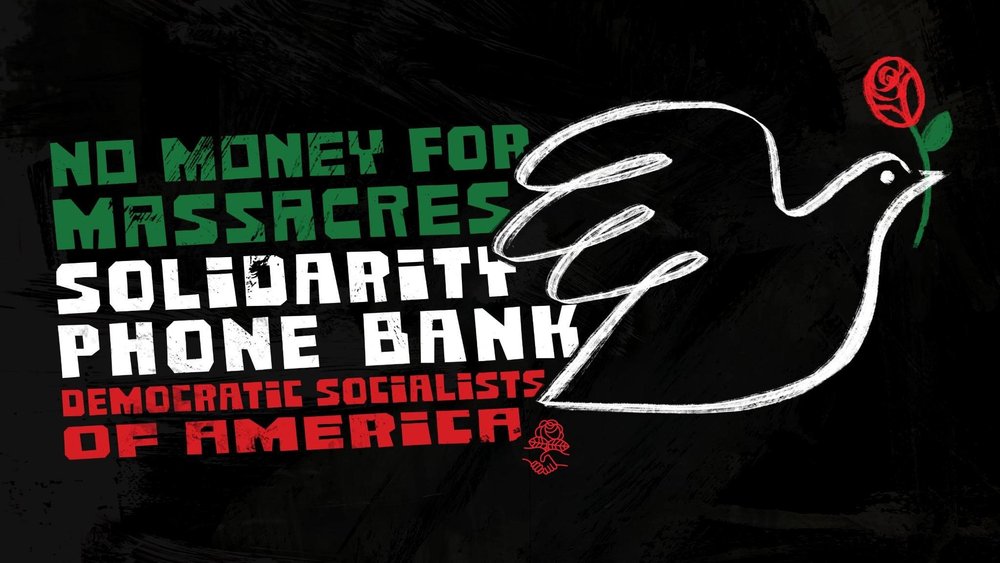
As Twin Ports DSA endorsed City Councilor Azrin Awal noted in her statement on October 16, Duluth is about the same length as the Gaza Strip. But Gaza has a population of 2 million people, compared to our 85,000. Israel has already dropped over 6000 bombs on Gaza during the past week, and an invasion is in the works. DSA has launched a No Money For Massacres phone bank campaign. Sign up to participate here.
Below is Councilor Awal’s statement in full.


Genocide on Holy Lands
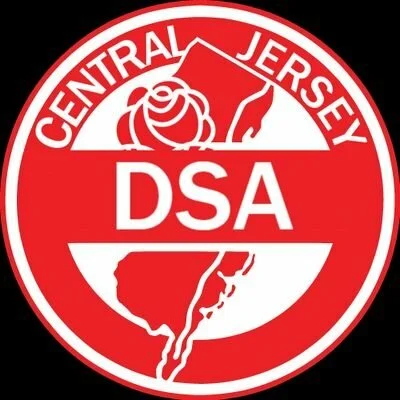

From the River to the Sea!
After the events of October 7th, 2023, the Israeli occupying force wasted little time in launching an indiscriminate bombing campaign against the 2.1 million Palestinian civilians in Gaza as a collective punishment, targeting ambulances1, apartments, schools, mosques, hospitals, and media outlets, turning the existing blockade into an active and deadly siege. Israel has cut off all water, power, fuel, and food supply to Gaza, a further crime against humanity, and the specter of starvation and genocide looms. Telegraphing further escalation, Israeli defense minister Yoav Gallant ordered a complete siege on the Gaza Strip2; only a day earlier, Israeli Prime Minister Benjamin Netanyahu warned Palestinian civilians in Gaza to “leave now.”3 Leave to go where exactly?
At the time of this writing, thousands of people have already been killed inside and near the Gaza Strip. International law is clear on the legitimacy of occupied peoples to liberate themselves from “colonial domination, apartheid, and foreign occupation by all available means, including armed struggle.”4 International law is also clear on the prohibition of punishing a civilian for an offense he or she has not personally committed and the prohibition of reprisals against protected persons and their property.5 But since the beginning of 2023, the Israeli police, military, and armed settlers have killed, on average, one Palestinian a day. Since Israel imposed the blockade on the Gaza Strip, the occupying force has bombed Gaza a total of seven times: 2008, 2012, 2014, 2018, 2021, 2022, and 2023 — and Palestinians have never been able to leave for safety.
However, Netanyahu’s faux-humanitarian warning to Palestinians, “leave now,” touches the roots of the “Israeli-Palestinian conflict.” In 1948, Zionist paramilitary groups ethnically cleansed over 750,000 Palestinians from historic Palestine and established the state of Israel, a historic event known as al-Nakba in Palestinian collective memory6. It is the reason why nearly 67% of Palestinians in Gaza are descendants of families that were ethnically cleansed from the villages where Israeli kibbutzim and cities stand today. It is the reason why Israel is a military garrison state that maintains an apartheid system today, where Palestinians are harassed, robbed, and murdered by Israeli soldiers and settlers every day, from the Jordan River to the Mediterranean Sea.7 It is the reason why, despite Zionist attempts to deny their existence, Palestinians have continued to resist, persevere, and yearn for Return.
Now is not the time for supposedly balanced, measured statements that obfuscate the truth of the conflict. The failure of international bodies and leaders to hold Israel accountable to international law and to apply UN Resolution 194, the right of Palestinians to return to their ancestral homes, has resulted in what we are now bearing witness to. This has been the status quo for Palestinians for 75 years, and it must end.
Israel is able to maintain this barbaric status quo because of the diplomatic, military, and financial support of the United States since 1967. The United States uses this alliance to project its military power into the Middle East, as it seeks to do in all geostrategically important areas of the globe.
As American socialists, we understand the fight for socialism is international, and we understand the unique role the United States plays in administering a global capitalist empire. To assist Palestinians in their struggle for self-determination, our primary role is to pressure the US for a change in its foreign policy. To this end, we unequivocally support the BDS movement and call on American civil society to join the targeted boycott of Israeli goods, companies, and institutions.
The response of the Biden administration to these events still unfolding has been to supply Israel with more money and weapons.8 9The United States must end its policy of arming the apartheid, settler-colonial ethnostate of Israel. We fully condemn the capitalist Republican and Democratic parties, who are largely culpable for the continuation of violence and dispossession perpetrated upon Palestinians. America’s expanding military-industrial complex continues to act as a force of destabilization and oppression throughout the world, and major arms and military technology manufacturers like Raytheon make billions of dollars in profits from exploitation and war.
As socialists living in the heart of a global capitalist empire, we stand in opposition to the imperialism of the American ruling class, and we stand in solidarity with all oppressed people.
Palestine will be free — from the river to the sea.
In solidarity,
Central New Jersey DSA
-
https://www.businessinsider.com/doctors-without-borders-hospitals-ambulances-targets-israel-hamas-gaza-2023-10
 ︎
︎
- https://www.aljazeera.com/program/newsfeed/2023/10/9/israeli-defence-minister-orders-complete-siege-on-gaza
 ︎
︎
-
https://gulfnews.com/world/mena/israel-palestine-conflict-more-than-530-killed-after-hamas-launched-unprecedented-attack-on-israel-netanyahu-retaliates-declares-war-1.1696670798153
 ︎
︎
-
https://www.un.org/unispal/document/auto-insert-184195/
 ︎
︎
-
https://ihl-databases.icrc.org/en/ihl-treaties/gciv-1949/article-33
 ︎
︎
-
https://www.simonandschuster.com/books/The-Ethnic-Cleansing-of-Palestine/Ilan-Pappe/9781851685554
 ︎
︎
-
https://jacobin.com/2023/10/west-bank-apartheid-israel-idf-oslo-accords
 ︎
︎
-
https://themessenger.com/politics/biden-administration-discussing-military-aid-package-to-israel-after-hamas-attack
 ︎
︎
-
https://www.bbc.com/news/world-us-canada-67049196
 ︎
︎
The post From the River to the Sea! appeared first on Central NJ DSA.


Denver DSA stands with Palestine
Denver DSA unequivocally stands in solidarity with the people of Palestine in their fight for liberation from the apartheid regime of Israel. Palestinians have endured 75 years of dispossession, colonization, desecration, torture, and confinement at the hands of the Israeli government, enabled financially, politically, and culturally by the United States. The path to liberation must include ceasing all U.S. aid to Israel, lifting the blockade of Gaza, ending Zionist settler-colonialism, and ensuring the right for Palestinians to return to their homeland.
Yesterday, a wealthy and well-funded nuclear power with the financial, political, and cultural support of the United States began forcibly evacuating 1.1 million civilians from Gaza City during an ongoing indiscriminate carpet-bombing campaign which has already killed thousands of civilians, injured tens of thousands, and displaced hundreds of thousands. Israel has cut off food, water, fuel, electricity, and medical care from Gaza’s 2.3 million citizens, half of whom are children. These civilians have been deemed “human animals” by the Israeli Defense Minister overseeing these attacks, who committed to “treat them accordingly” – an open declaration of genocide. Yet even now, the American war machine readies itself to ship more weapons and send more military funding to support Israel’s extermination of the Palestinian people for daring to resist their brutal, unlivable conditions.
Border walls, military checkpoints, crippling sanctions, restricted water and electricity, food scarcity, impoverishment, denial of medical care, and routine bombings are the material conditions that Palestinians have been forced to live under for over 75 years. Backed by the US, the Israeli Occupation Forces (IOF) brutally murder Palestinians with impunity, over 8,000 since 2000 and thousands since October 7. The IOF detains 600 Palestinian children every year and keeps over 5,000 Palestinians imprisoned, a quarter of whom are held without charges or trial. For 16 years, Gaza has been transformed into an open-air prison, wherein the IOF concentrates 2.3 million people in an area smaller than Denver and bombs them in politically-motivated campaigns they sadistically term “mowing the grass.”
Bloodshed is a universal tragedy. But under apartheid and occupation, some lives are deemed more precious than others. The negative blowback of apartheid should come as no shock; people who are oppressed will perpetually seek ways to free themselves from that oppression. The murder of Palestinians has been a systemically invisibilized occurrence for decades. When Palestinians quietly suffer the daily violence inflicted on them, the West calls that “peace”. Denver DSA recognizes that the only true and lasting peace must be predicated on liberation from occupation, and it is towards that goal that we resolve ourselves today.
We call on all DSA members and endorsed DSA electeds to stand unequivocally in support of Palestinian people’s right to resist. We encourage all DSA chapters to stand with the people of Palestine and organize turn-out to local demonstrations.
May Palestine be free, from the river to the sea.


Statement In Support Of Palestinian Liberation
In the face of over 75 years of settler-colonial violence and genocide, the will and spirit of the Palestinian resistance burns brighter than ever. The state of Israel has ethnically […]
The post Statement In Support Of Palestinian Liberation appeared first on Houston DSA.


River Valley DSA Condemns the Tax Cuts
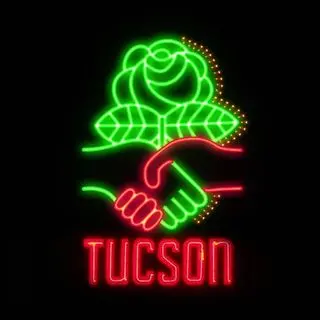

General Meeting - Saturday
|
|
 ︎
︎


